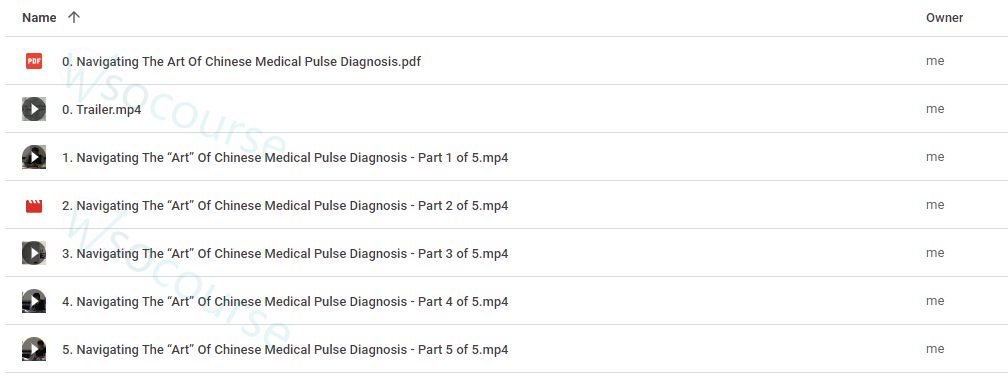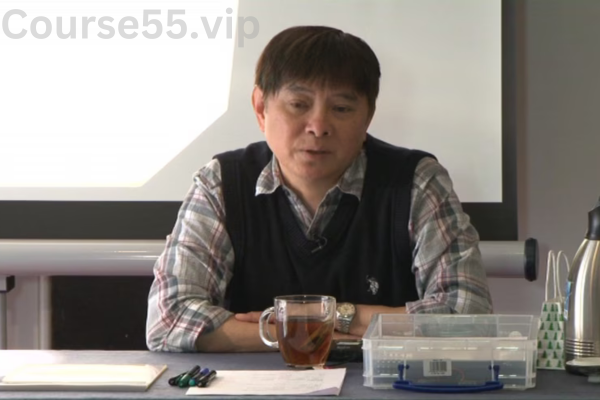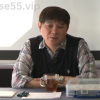-
×
 Outbursts, Oppositional Defiance and Frustration in the Classroom: Self-Regulation Techniques to Reduce the Frequency, Severity and Duration of Problematic Behavior By Laura Ehlert - PESI
1 × $23.10
Outbursts, Oppositional Defiance and Frustration in the Classroom: Self-Regulation Techniques to Reduce the Frequency, Severity and Duration of Problematic Behavior By Laura Ehlert - PESI
1 × $23.10 -
×
 Legal and Ethical Issues in Behavioral Health in South Carolina By Lois Fenner - PESI
1 × $23.10
Legal and Ethical Issues in Behavioral Health in South Carolina By Lois Fenner - PESI
1 × $23.10 -
×
 The Marriage Reset: From Obligation To Adventure By Dani Johnson
1 × $31.00
The Marriage Reset: From Obligation To Adventure By Dani Johnson
1 × $31.00 -
×
 Writing Email Copy for B2B Companies By AWAI
1 × $23.10
Writing Email Copy for B2B Companies By AWAI
1 × $23.10 -
×
 Attachment Focused Therapy: Trauma Related Disorders in Children & Adolescents By Daniel Hughes - PESI
1 × $23.10
Attachment Focused Therapy: Trauma Related Disorders in Children & Adolescents By Daniel Hughes - PESI
1 × $23.10 -
×
 Spartan Renko 2.0 Workshop 2017
1 × $23.10
Spartan Renko 2.0 Workshop 2017
1 × $23.10 -
×
 New Rules for Treating Trauma: Integrating Neuroscience for Resilience, Connection and Post-Traumatic Growth By Courtney Armstrong - PESI
1 × $23.10
New Rules for Treating Trauma: Integrating Neuroscience for Resilience, Connection and Post-Traumatic Growth By Courtney Armstrong - PESI
1 × $23.10 -
×
 Intermediate To Advanced Breath-Control Course By Simon Borg-Olivier
1 × $39.00
Intermediate To Advanced Breath-Control Course By Simon Borg-Olivier
1 × $39.00 -
×
 Mindfulness-Based Stress Reduction for Teens By Gina Biegel - PESI
1 × $23.10
Mindfulness-Based Stress Reduction for Teens By Gina Biegel - PESI
1 × $23.10 -
×
 Black Gold Strategies by Basecamptrading
1 × $23.10
Black Gold Strategies by Basecamptrading
1 × $23.10 -
×
 Couples on the Brink: When Is Enough Enough? By Terry Real - PESI
1 × $23.10
Couples on the Brink: When Is Enough Enough? By Terry Real - PESI
1 × $23.10
Navigating The “Art” Of Chinese Medical Pulse Diagnosis By Jeffrey Yuen
$170.00 Original price was: $170.00.$23.10Current price is: $23.10.
SKU: C55vip.42682zBNNs3PL
Category: Download
Tags: Art, Chinese Medical Pulse, Jeffrey Yuen, Navigating The “Art” Of Chinese Medical Pulse Diagnosis
Navigating the ‘Art’ of Chinese Medical Pulse Diagnosis – Digital Download!

Navigating The “Art” Of Chinese Medical Pulse Diagnosis By Jeffrey Yuen
Overview

Mastering the ‘Art’ of Pulse Diagnosis in Chinese Medicine
Pulse diagnosis in traditional Chinese medicine (TCM) is an intricate art, offering practitioners a unique window into the health of the body, mind, and spirit. Jeffrey Yuen’s seminar on pulse diagnosis, “Navigating the ‘Art’ of Chinese Medical Pulse Diagnosis,” provides an immersive exploration of this ancient practice, which remains a cornerstone of TCM today. The seminar is not merely about learning techniques; it is about connecting deeply with the patient and understanding the flow of energy in the body. Through Yuen’s insights, pulse diagnosis emerges as an art form that blends technical skill with compassionate care, allowing practitioners to address both physical ailments and emotional imbalances.
A Deep Dive into the History of Pulse Diagnosis
To truly grasp the significance of pulse diagnosis, one must first understand its historical foundations. As outlined in ancient texts like Wang Shu-he’s Mai Jing and Li Shi-zhen’s Bencao Gangmu, pulse-taking has evolved into a refined diagnostic tool. These works laid the groundwork for how pulse patterns are linked to various organ systems and overall health. Yuen’s seminar emphasizes how pulse diagnosis is more than a mechanical technique; it is a philosophical practice rooted in the idea that the pulse reflects not only the body’s physiological state but also the emotional and spiritual aspects of an individual.
Yuen underscores the importance of grounding modern practice in these historical principles. By viewing pulse diagnosis through the lens of classical texts, practitioners can interpret pulses with greater depth, integrating ancient knowledge into contemporary clinical practice. This historical context enriches the process, allowing pulse diagnosis to transcend beyond a simple physical examination to become a holistic conversation with the patient’s inner state.
Key Milestones in Pulse Diagnosis History:
-
Mai Jing by Wang Shu-he: Laid the foundational principles for pulse diagnosis.
-
Bencao Gangmu by Li Shi-zhen: Standardized pulse readings and their interpretations.
-
Philosophical Integration: Blends ancient teachings with modern medical practices.
Key Skills for Effective Pulse Diagnosis
Developing the Art of Pulse Taking
Pulse diagnosis is more than just a diagnostic technique—it is an art that requires acute awareness and sensitivity. Yuen’s seminar provides practitioners with the tools to cultivate this sensitivity, teaching them how to differentiate between pulse qualities and what they reveal about a patient’s health. Understanding pulse qualities, such as fast or slow, deep or superficial, gives practitioners a profound understanding of both the body’s internal workings and its emotional state.
Key pulse qualities include:
-
Fast Pulse: Indicates heat or hyperactivity.
-
Slow Pulse: Often points to cold conditions or deficiency.
-
Deep Pulse: Suggests internal illness or deeper organ involvement.
-
Superficial Pulse: Can signal external pathogenic factors like wind or heat.
In addition to physical signs, pulse-taking is also about establishing a meaningful connection with the patient. By interpreting the pulse with compassion, practitioners build trust, which enhances the healing process. Yuen emphasizes that pulse diagnosis is not just a clinical act but a deeply relational one, fostering holistic health by addressing the physical, emotional, and spiritual dimensions of the patient.
Practical Pulse Diagnosis Techniques and Application
Bringing Theory to Life with Practical Skills
A key focus of Yuen’s seminar is bridging the gap between theory and practice. Participants are taught how to enhance their tactile sensitivity through various exercises, improving their ability to detect subtle differences in pulse qualities. This hands-on learning helps practitioners refine their touch, learning to adjust finger pressure and positioning to read pulses accurately.
Additionally, pulse diagnosis is contextual—meaning that the same pulse pattern can have different meanings depending on the overall health picture of the patient. Yuen guides participants through real-world case studies to illustrate how to interpret pulses in different contexts. This approach highlights that pulse diagnosis is not a static skill but a dynamic one, requiring practitioners to adapt and respond to each patient’s unique health story.
Practical Techniques Taught:
-
Pulse palpation: Enhancing sensitivity through varied touch techniques.
-
Pressure adjustments: Learning how to adjust finger pressure for more accurate readings.
-
Case studies: Analyzing how pulse patterns relate to patient health in real-world scenarios.
The Philosophy Behind Pulse Diagnosis
Pulse Diagnosis as an Artistic and Holistic Practice
Beyond technique, pulse diagnosis is a deeply philosophical practice, and Yuen’s approach reflects this. Pulse-taking is viewed not just as a diagnostic method but as an art that requires creativity, intuition, and compassion. The pulse, as Yuen teaches, is a reflection of both the body’s physical state and the emotional and spiritual energies within a person. Each pulse is unique, much like each patient, requiring a practitioner to engage deeply with the person before them.
Yuen encourages practitioners to view each pulse diagnosis as an opportunity to connect with the patient on a profound level. By recognizing the unique quality of each pulse, practitioners can approach healing not just with technical expertise, but with empathy and understanding. Pulse diagnosis becomes an artistic process, one that requires constant adaptation to the individual’s needs.
Philosophical Themes Explored:
-
Healing as an art form: Transforming pulse diagnosis into a creative practice.
-
A holistic view: Recognizing the interconnectedness of physical, emotional, and spiritual aspects of health.
-
Every pulse is unique: Appreciating the individuality of each patient and their pulse.
Conclusion: Bridging Ancient Wisdom with Modern Healing Practices
In today’s world of specialized and technology-driven healthcare, Yuen’s seminar on pulse diagnosis serves as a vital reminder of the importance of human connection in the healing process. By blending historical insights with modern clinical skills, pulse diagnosis remains a powerful tool for diagnosing and healing. Yuen’s teachings encourage practitioners to see pulse diagnosis not only as a method but as an art form, allowing them to approach each patient with compassion, understanding, and creativity. Through this profound practice, pulse diagnosis bridges the gap between ancient wisdom and contemporary medicine, helping practitioners foster a deeper connection with their patients and offer more comprehensive, compassionate care.
In the end, this thorough course promotes a more compassionate approach to health and well-being by igniting a passion for comprehending and connecting with patients on a deeper level, in addition to providing practitioners with knowledge. Practitioners are given the means to become healers through the creative interpretation of pulse, which connects traditional knowledge with modern methods.
Frequently Asked Questions:
Business Model Innovation: We operate a group buying strategy, allowing participants to share costs and access popular courses at reduced prices. This model benefits individuals with limited financial resources, despite concerns from content creators about distribution methods.
Legal Considerations: The legality of our operations involves complex issues. Although we don’t have explicit permission from course creators to resell their content, there are no specific resale restrictions stated at the time of purchase. This ambiguity creates an opportunity for us to provide affordable educational resources.
Quality Control: We ensure that all course materials purchased are identical to those offered directly by the creators. However, it’s important to understand that we are not official providers. As such, our offerings do not include:
– Live coaching calls or sessions with the course author.
– Access to exclusive author-controlled groups or portals.
– Membership in private forums.
– Direct email support from the author or their team.
We aim to reduce the cost barrier in education by offering these courses independently, without the premium services available through official channels. We appreciate your understanding of our unique approach.
Be the first to review “Navigating The “Art” Of Chinese Medical Pulse Diagnosis By Jeffrey Yuen” Cancel reply
You must be logged in to post a review.











Reviews
There are no reviews yet.